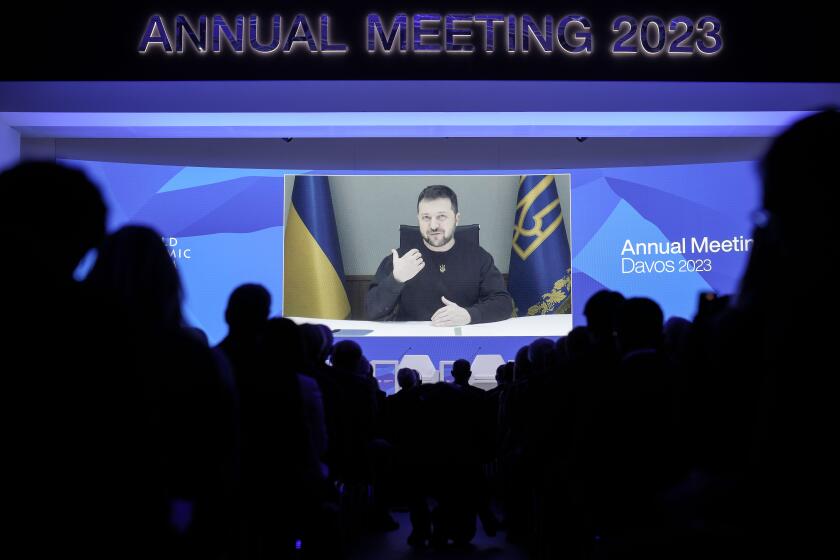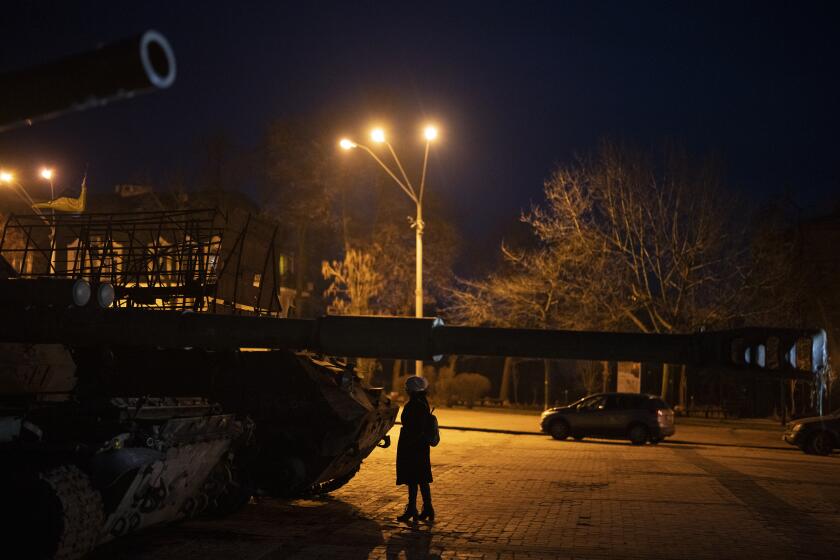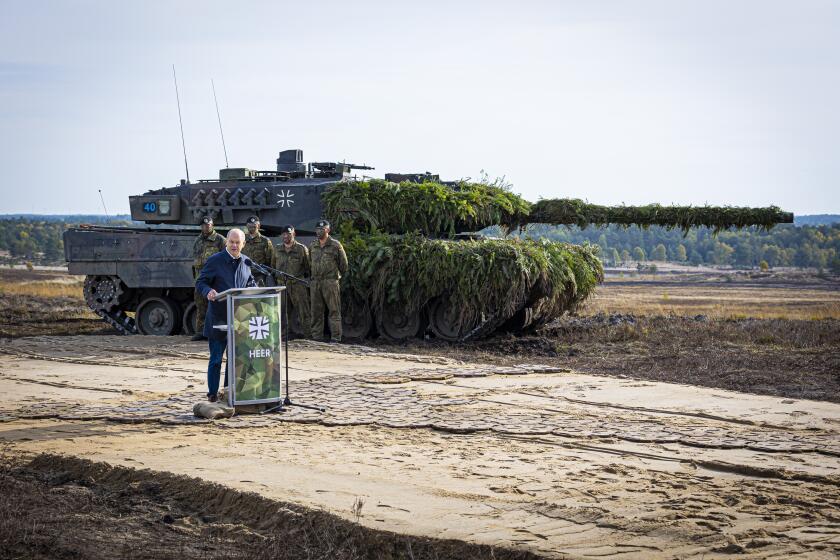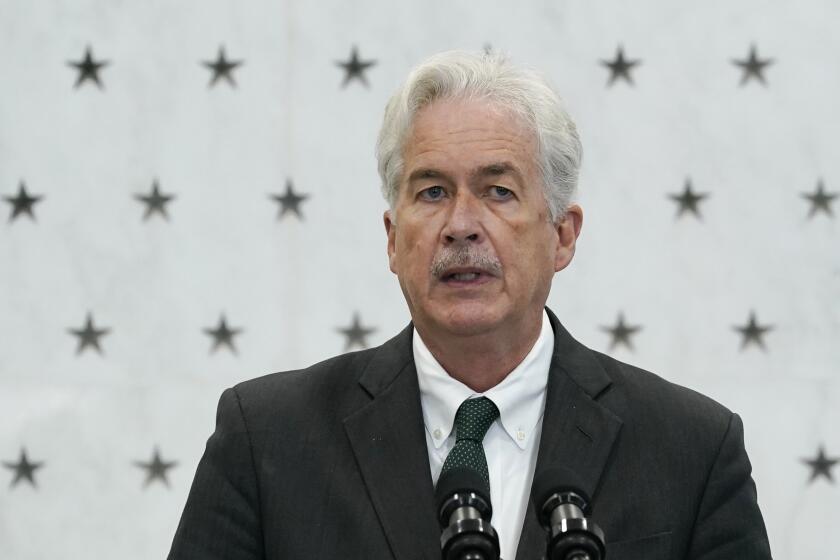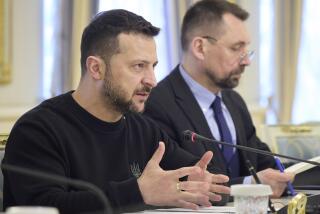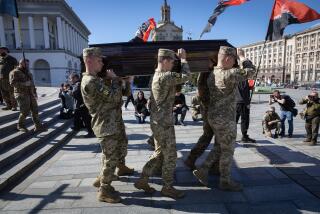Poland to ask a newly willing Germany for permission to send tanks to Ukraine
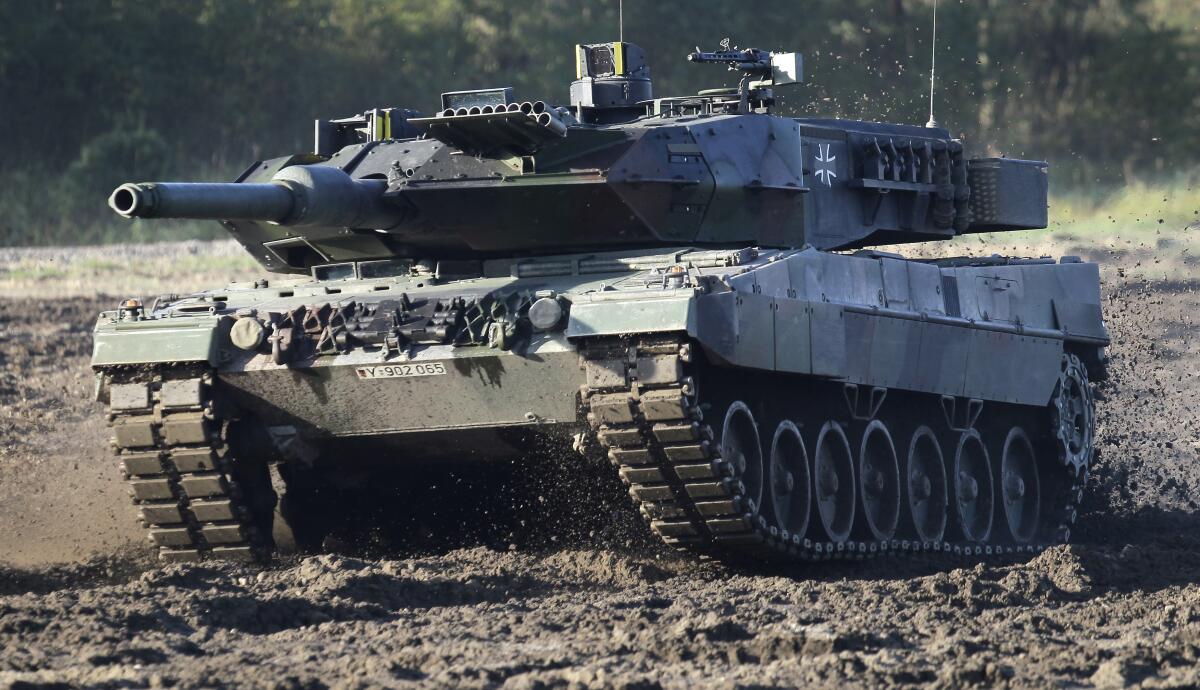
- Share via
WARSAW — Poland said Monday that it would ask Berlin for permission to send German-built Leopard tanks to Ukraine, as the government in Warsaw pushes its Western allies to move faster on supplying Kyiv with more military hardware to repel Russia’s invasion.
Germany has hesitated over sending tanks to Ukraine. But Polish officials took heart from German Foreign Minister Annalena Baerbock’s remarks Sunday that Berlin wouldn’t seek to stop Poland from providing Leopard 2 battle tanks to Kyiv.
Polish Prime Minister Mateusz Morawiecki didn’t specify at a news conference when the request would be made. He said Poland was building a coalition of nations ready to send German-made Leopards to Ukraine.
Poland needs the consent of Germany, which builds the tanks, to send them to a non-NATO country. But even if Germany withholds its approval, Warsaw will make its own decisions, Morawiecki said.
Ukraine says tanks — and especially the Leopards — are vital to its war effort. Both sides’ battlefield positions are mostly deadlocked during winter, with new ground offensives expected in the spring. Russia’s forces are much larger than Ukraine’s, so Kyiv wants to gain an advantage in weaponry and fuller backing from its Western allies.
Poland has become a leading advocate in the European Union for giving Ukraine the military aid that could help it prevail over the Kremlin’s invading forces 11 months after the war started. Germany’s hesitation has drawn criticism, particularly from Poland and the Baltic countries on NATO’s eastern flank that feel especially threatened by Russia.
Berlin, despite providing substantial aid, has been criticized for dragging its feet on providing military hardware.
At World Economic Forum in Davos, Ukrainian President Zelensky says, ‘The supplies of Western tanks must outpace another invasion of Russian tanks.’
German government spokesman Steffen Hebestreit said Monday that it was important for Germany not to take a “reckless” step that might be regretted afterward, adding that a decision would not be rushed.
“These are hard questions of life and death,” he added. “We have to ask what this means for the defense of our own country.”
Pressed on how long a decision on sending tanks might take, Hebestreit said: “I assume that it’s not a question of months now.”
U.S. Army Gen. Mark A. Milley has delivered a message to Ukrainian soldiers at a new training program in Germany: These are urgent times.
Previously, Polish officials have indicated that Finland and Denmark were ready to join Poland in sending Leopards to Ukraine. Britain has pledged to send some of its Challenger tanks. French President Emmanuel Macron said Sunday that he had asked his defense minister to “work on” the possibility of sending Leclerc battle tanks to Ukraine.
But Macron said a decision hinged on three criteria that have also weighed on the minds of other Western leaders: that sharing the equipment doesn’t lead to an escalation of the conflict, that it would provide efficient and workable help when training time is taken into account, and that it wouldn’t weaken his country’s own military.
Morawiecki said that although Poland intended to ask Germany for permission to send Leopard tanks to Ukraine, the request was “a secondary matter” as a group of EU countries looked at how to help Kyiv.
A helicopter crash in a Kyiv suburb killed at least 14 people, including Ukraine’s interior minister and a child, authorities said Wednesday.
“Naturally, these are not easy talks, but we will be taking efforts to break this barrier of unwillingness in various countries,” he said.
Baerbock, Germany’s top diplomat, told French television channel LCI on Sunday that Poland hasn’t formally asked for Berlin’s approval to send Leopards, but added: “If we were asked, we would not stand in the way.”
Regarding Baerbock’s comments, Morawiecki said that “exerting pressure makes sense” and that her words are a “spark of hope” that Germany may even take part in the coalition.
Daniel W. Swift, a former member of the Navy SEALs, was killed Wednesday in Ukraine, U.S. officials said Friday. They said he was not fighting in an official capacity.
According to Morawiecki, Germany has “more than 350 active Leopards and about 200 in storage.”
Poland wants to send a company of Leopard tanks, which means 14 of them, but they would barely make an impression in a war that involves thousands of tanks. If other countries contribute, Warsaw reckons, the tank detachment could grow to a much bigger brigade size.
Berlin has shown caution at each step of increasing its aid to Ukraine, a hesitancy seen as rooted in its history and political culture.
Kremlin spokesman Dmitry Peskov said that the latest developments on sending European tanks to Ukraine “signaled increasing nervousness among members of the alliance.”
Germany has become one of Ukraine’s leading weapons suppliers since Russia’s invasion, but Chancellor Olaf Scholz has gained a reputation for hesitating.
Ukraine’s supporters pledged billions of dollars in military aid to Ukraine during a meeting at Ramstein Air Base in Germany on Friday. International defense leaders discussed Ukraine’s urgent request for the Leopard 2 tanks, and the failure to work out an agreement overshadowed the new commitments.
In Brussels, EU foreign ministers gave the green light Monday to a further 500-million euro ($543-million) package of military support for Ukraine, as well as funding for a training mission for the bloc has set up for the country’s troops.
The money would be used to reimburse EU countries for weapons and ammunition they supply Ukraine. Another 45 million euros $49 million will pay for the 27-nation bloc’s military training mission this year.
It brings the total amount of money provided to Ukraine from the EU fund to about 3.6 billion euros.
Moscow, in response to the pledges of sophisticated Western weapons for Kyiv’s military, has stepped up its warnings that escalation risks catastrophe.
CIA Director William Burns visited Kyiv last week to meet with Ukrainian President Volodymyr Zelensky.
“We have said on numerous occasions that escalation is the most dangerous path, and the consequences may be unpredictable,” Russian Deputy Foreign Minister Sergei Ryabkov said. “Our signals are not listened to, and Russia’s adversaries keep raising the stakes.”
The Kremlin’s forces have kept up their bombardments of Ukrainian areas.
Kharkiv Gov. Oleh Sinegubov said Monday that Russian forces shelled several towns and villages in the northeastern region over the previous 24 hours, killing a 67-year-old woman and leaving another resident wounded.
Neither side shows signs of backing down as the war nears the one-year mark.
The Pentagon says about 100 Ukrainians will head to Oklahoma’s Ft. Sill in coming days to begin training on how to use Patriot missile system.
The Kremlin appears to be keeping its options open on mobilizing more soldiers. Russian authorities declared complete the mobilization of an additional 300,000 reservists in late October. However, some Russian lawyers and rights groups pointed out that Russian President Vladimir Putin’s mobilization decree remains in effect until another presidential decree is issued to formally end the action.
Peskov said Monday that although the decreed number of reservists had been mobilized, the decree remained in force because it also included “other measures needed to ensure the fulfillment of tasks by the military.” He didn’t elaborate.
Ukrainian officials have repeatedly warned about Russia’s plans to continue mobilizing more troops.
More to Read
Sign up for Essential California
The most important California stories and recommendations in your inbox every morning.
You may occasionally receive promotional content from the Los Angeles Times.
